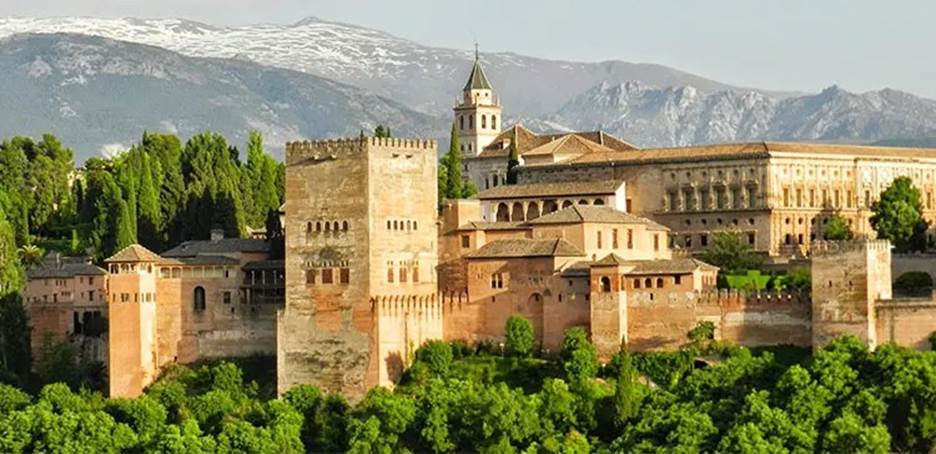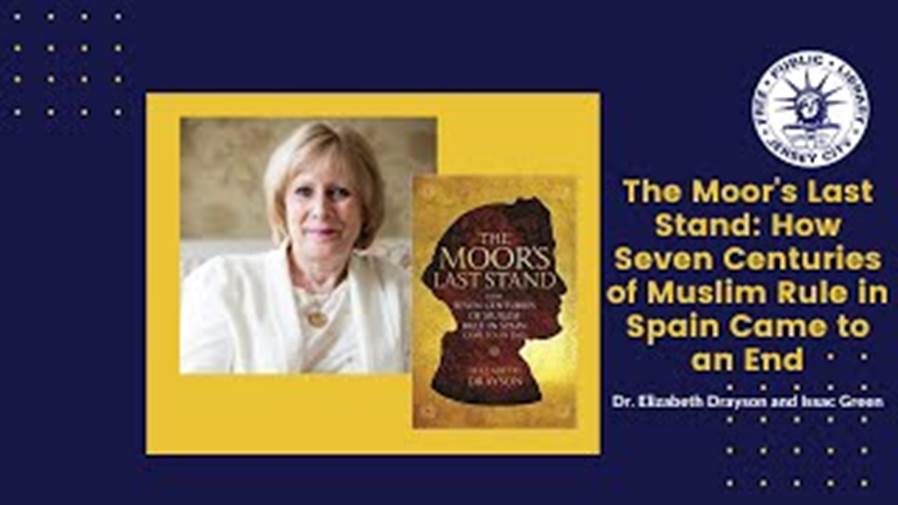
Probe around the globe
The Twilight of Islamic Rule in Spain
By Dr Syed Amir
Bethesda, MD

The sun finally set on eight centuries of Muslim rule in Spain on January 2, 1492, as the 23rd and last ruler of the Nasrid dynasty of Granada, Sultan Abu Abdullah Muhammad XII, commonly known as Abu Abdullah (Boabdil in the West), surrendered the keys of the exquisite Alhambra palace to the Catholic monarchs, Ferdinand and Isabella, husband and wife.
Nearly five centuries later in 1997, the Spanish Government belatedly erected a bronze monument to Sultan Abu Abdullah at the location in Granada where he had surrendered the city.
According to legend, as he rode into exile, Abu Abdullah turned back to cast one last glance at his ancestral palace that he would never see again and was overwhelmed by a rush of emotions. His mother, Princess Aisha al-Horra, chided him, “My son, you do well to cry like a woman for what you could not defend like a man.” This incident, dubbed as “The Last Sigh of the Moor,” has been immortalized over the centuries in numerous books and ballads.
The story, most likely apocryphal, has been promoted to demean the character of Abu Abdullah and depict him as a weak and indecisive ruler. However, credible evidence does not support this negative portrayal.
Abu Abdullah, like most aspects of his reign and life, has been a figure of both mystery and controversy. Author Steven Nightingale in his book, Granada, The Light of Andalucía, defined Abu Abdullah as “ridiculous Boabdil who with the full weight of his fear and vulgarity had hastened the end of the city by his useless quarrelling and confusion.” This adverse assessment, however, is refuted in a new book, “The Moor’s Last Stand.”

Author Elizabeth Drayson, has reexamined Abu Abdullah’s character and the role he played in the demise of Nasrid dynasty that his ancestors had founded nearly two-and-half centuries before. She argues that Abu Abdullah has been treated unfairly and many misconceptions about him have been perpetuated by those with a biased view .
Sultan Abu Abdullah was an unlucky man, as he had to contend with an unusual confluence of adversities while growing up and later in his young life. He was involuntarily involved in a mortal conflict between his father Sultan Abul Hasan and his mother. Abul Hasan, in old age, became infatuated with a beautiful young Christian girl, Zoraya, and abandoning his wife and son married her. The stately chambers of Alhambra became sites of intrigue, treachery, and massacres, while internecine and dynastic fights during the final days of the Nasrid dynasty became frequent occurrences.
Concurrently, Abu Abdullah was engaged in an existential struggle with Christian forces that were fast closing in on his capital. As the military situation became hopeless, he concluded that his small kingdom lacked the resources to withstand the onslaught of Christian foes. Yet, before he surrendered, he skillfully negotiated with Ferdinand and Isabela the most generous terms for his Muslim and Jewish subjects he was leaving behind. They were to have full freedom to practice their religion, be free to travel and for three years exempt from paying any taxes. Unfortunately, these agreements were betrayed soon after his departure.
Writing in the Saudi-Aramco magazine, Tor Egeland described the plight of Muslims in Granada a few years after its surrender: “In 1499, the primate of Spain, Ximenez Cisneros, arrived in Granada and was applying great pressure on the Muslims to become Christians.” Soon they were forced to either convert or leave. Many dissimulated as Christians, but secretly practiced Islam; they were given a special name, Moriscos. Eventually, in the year 1614, an expulsion order was issued by the regime, designed to cleanse Spain of all its remaining non-Catholic inhabitants.
Shortly after the fall of Granada, Abu Abdullah, age 33, migrated to North Africa and seems to have descended into oblivion. In contrast to his early life spent in the opulence and splendor in the halls of Alhambra Palace, we know little of his life in exile. Even his final resting place is not known with any certainty. According to the Arab historian, al-Maqqari, he settled in the Moroccan capital of Fez and died there when he was seventy-five-years old.
Other reports contest this assertion, suggesting that he died at a much younger age, when he was only about thirty-four years old. There is also disagreement about the location of his gravesite. Some historians believe that he was buried in Fez, inside a shrine, that is now in a bedraggled state, serving as a shelter for beggars and drunks. An alternative site suggested is in Tlemcen, a city in Algeria, famous for its Andalusian style buildings. Alas, after the lapse of over five centuries, it is not easy to definitively resolve these issues.
Does the responsibility for the loss of the last Muslim enclave of Granada rest with Abu Abdullah? The answer is emphatically no. The reasons for the downfall of Muslim rule in Spain, long in the making, are complex and varied. The Muslim supremacy in Spain lasted for about four-hundred years, starting from the reign of Amir Abd al Rahman I (731-788), and reaching its zenith during the Caliphate of Abd al Rehman III (from 912 to 961). The capital, the jewel of the western Islamic caliphate, Cordoba, weakened by the perennial attacks of the Barber forces from North Africa and internecine conflicts, was eventually seized by King Ferdinand III in 1236, followed by the fall of Seville a mere twelve years later. By this time, the Christian forces had attained decisive supremacy over the greater part of what used to be Muslim Al-Andalus. On several previous occasions, Muslims from North Africa, Almoravid (1086) and later Almohad (1312), had come to the rescue and temporarily slowed the collapse of Al-Andalus.
Ultimately, with the disintegration of central authority, the former powerful Caliphate splintered into small feuding regional states, called by Arabs, Taifa (party) states. Ibn-al Ahmar, lord of one of these petty princelings, captured Granada and surrounding areas and founded the Nasrid dynasty, proclaiming himself the Emir. Paradoxically, the dynasty endured for more than two-hundred-and-fifty years, the longest lasting Muslim realm in Spain. The fate of Granada, the last Muslim refuge, was sealed when the kingdoms of Aragon and Castile were united by marriage of Ferdinand II and Isabella I, and their combined forces were deployed against it. This time no help came from outside; the North Africans were too weak themselves to help, while an appeal to the Mameluke Sultan of Egypt from desperate Granadans generated no response.
While the curtain was dropping on the last scene of the Muslim rule in Spain, another event of momentous importance was unfolding. After months of trying and a shortly after the fall of Granada, Christopher Columbus was finally granted permission and resources by Queen Isabella to set sail to discover a new route to the East Indies. One of his winning arguments was that he would spread Christianity and make new converts. In time, Spain acquired a vast empire, comprising parts of North and South America, the West Indies and territories as far away as the Philippines and beyond. It became a world power; however, it never could recreate the grand libraries and centers of learning of Cordoba and Toledo or build an architectural masterpiece like the Alhambra.
(The author is a former Assistant Professor, Harvard Medical School, and a health science administrator, US National Institutes of Health)

